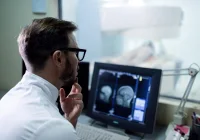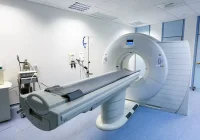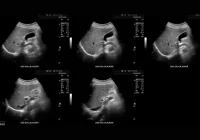Long axial field-of-view (LAFOV) PET/CT is reshaping paediatric nuclear medicine by combining markedly higher sensitivity with the ability to image the whole body in a single bed position. For children, who are more radiosensitive and often find long procedures difficult, this translates into shorter acquisitions, reduced radiopharmaceutical doses, fewer motion artefacts and a lower likelihood of sedation. The approach aligns with the ALARA principle and supports personalised protocols that balance dose and time according to each child’s age, weight, cooperation and clinical need. While LAFOV systems bring data handling demands and higher initial costs, evidence across oncology, cardiovascular disease, infection and inflammation indicates broad clinical value. Emerging techniques for further dose optimisation and streamlined preparation methods suggest a more comfortable, efficient and diagnostically robust experience for children and families.
Higher Sensitivity, Lower Dose, Faster Scans
LAFOV PET/CT enables whole-body imaging in one position, avoiding the multiple bed moves typical of short axial field-of-view systems and cutting total acquisition to a few minutes. The increased sensitivity can be traded for substantial dose reduction, shorter scan time or both, improving comfort and image quality in young, uncooperative or critically ill patients. Continuous list-mode acquisition supports retrospective motion handling by discarding affected frames, reducing repeat scans. Advanced reconstruction options, including extended photon acceptance angles, further sustain image quality at lower activities.
Must Read: Paediatric MRI Contrast Agent Risks
Dose optimisation is central in paediatrics. Conventional PET/CT contributes to cumulative exposure from both the radiotracer and CT, and a single conventional paediatric PET/CT has been reported at around 14.5 mSv. LAFOV systems maintain clinically acceptable image quality at 6.25–12.5% of adult reference doses without compromising lesion detectability or tumour-to-background, equating to approximate reductions in administered activity of 93–98% relative to current paediatric guidance when ultra-high sensitivity modes are used. A national survey underscored variability in acquisition and processing and supported the need for guidance to achieve the best dose–image quality balance, reflecting widespread digital PET/CT capacity that can facilitate further reductions. Preliminary evaluations in children indicate reductions of over 85% compared with earlier paediatric dose cards.
Optimising the CT component is increasingly important as PET doses fall. Spectral shaping with tin filters has achieved 80–85% attenuation-correction CT dose reduction in adults, though image quality degradation may limit clinical use. CT-less and AI-based attenuation correction approaches, including methods leveraging lutetium background radiation, show promise in adults but require validation in children. These avenues highlight how LAFOV PET/CT can be complemented by innovations that minimise radiation while preserving diagnostic performance.
Clinical Utility Across Oncology, Cardiac and Infection
In oncology, LAFOV PET/CT supports rapid, whole-body assessment with ultra-low dose exposure. In childhood lymphoma, where imaging guides risk stratification, staging and treatment adaptation, high-sensitivity [¹⁸F]FDG PET/CT helps differentiate residual active disease from post-treatment change. Post-transplantation lymphoproliferative disorder is another key indication; [¹⁸F]FDG PET/CT can support or rule out suspicion, localise lesions for biopsy and monitor response through repeated, low-dose assessments. An illustrative case of a 3-year-old child scanned over 5 minutes with 18 MBq [¹⁸F]FDG demonstrated metabolically active lymphadenopathy above and below the diaphragm alongside splenic and marrow findings, achieved with parental presence, distraction and intranasal premedication.
Cardiovascular applications include complex congenital heart disease, inflammatory conditions such as myocarditis and vasculitis, infectious endocarditis, viability assessment and perfusion. LAFOV PET/CT can detect systemic inflammatory or infectious processes that affect the heart or arise from cardiac disease, informing pre-surgical planning and post-operative monitoring. A cooperative 8-year-old with suspected endocarditis underwent a 7-minute scan after injection of 12 MBq [¹⁸F]FDG without sedation, supported by child-friendly lighting and music. Although tracer availability and paediatric-specific protocols remain challenges, the modality offers a valuable option when conventional imaging is inconclusive.
For infection and inflammation more broadly, higher sensitivity helps reveal low-grade or low-metabolic-activity disease that may be missed on conventional systems, including biofilms on prosthetic material and small-vessel vascular inflammation. In children with prolonged fever of unknown origin, faster acquisitions reduce motion and limit time away from intensive care, enabling whole-body assessment with improved practicality. The potential for whole-body parametric imaging opens research pathways for quantitative characterisation while retaining the practical benefits of short scans.
Protocol Optimisation, Workflow and Access
Paediatric PET/CT requires tailored protocols to balance diagnostic accuracy with minimised exposure and short duration. Preparation is critical to reduce anxiety and avoid sedation. Pre-scan consultations explain the procedure to families, assess the child’s ability to remain still and enable personalised planning. On the day, parental presence, child-friendly lighting, favourite music and ceiling-projected films improve cooperation. When relaxation support is still needed, intranasal dexmedetomidine may be considered. With LAFOV PET/CT, most scans can proceed without sedation, supported by rapid acquisitions that are better tolerated by children.
Personalised dosing strategies align activity and time with cooperation. Children unable to lie still may receive a slightly higher activity for very short scans, while cooperative patients can benefit from ultra-low-dose protocols with longer acquisitions. Such flexibility enhances departmental throughput and adheres to ALARA. As PET activity falls, attention to CT dose and reconstruction parameters becomes more influential in the overall exposure profile, reinforcing the need for centre-specific optimisation and harmonised guidance.
Despite clear advantages, challenges remain. There are no standardised international protocols specific to LAFOV systems in paediatrics, contributing to inter-centre variation. Availability is limited by acquisition and operational costs. The paediatric population is heterogeneous, demanding flexible, individualised strategies and development of age-specific reference data for interpretation. Practical steps include dedicated paediatric imaging staff, clear family communication, age-appropriate distraction and motion-aware reconstruction. Dynamic and multiparametric PET methods, already established in adults, may enhance functional assessment in children if feasibility with short, motion-tolerant acquisitions is confirmed. Economic analyses in adults suggest LAFOV cost-effectiveness, and efficiencies from reduced sedation and streamlined workflows may prove relevant in paediatric services.
LAFOV PET/CT brings faster whole-body imaging, major opportunities for dose reduction and improved tolerance for children, while preserving diagnostic confidence across oncology, cardiac disease, infection and inflammation. With structured preparation, personalised dosing and motion-aware reconstruction, many scans can be completed quickly without sedation. As centres refine protocols, address CT dose and build paediatric reference data, access to LAFOV PET/CT and harmonised guidance will help embed this modality as a cornerstone of safer, more efficient paediatric imaging.
Source: British Journal of Radiology
Image Credit: iStock










